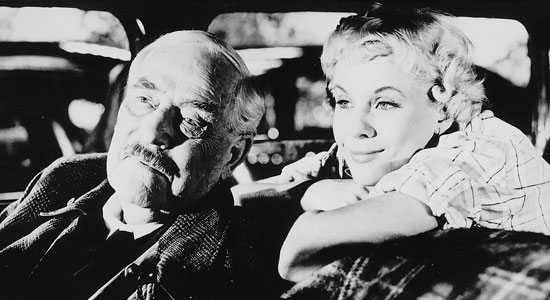MAGNET contributing editor Jud Cost is sharing some of the wealth of classic films he’s been lucky enough to see over the past 40 years. Trolling the backwaters of cinema, he has worked up a list of more than 100 titles—from the ’30s through the ’70s—that you may have missed. A new selection, all currently available on DVD, appears every Friday.

Wild Strawberries (1957, in Swedish with English subtitles, 91 minutes)
Even the great film director Ingmar Bergman was hesitant to ask his idol, Victor Sjöström, the father of Swedish cinema, to star in the role Bergman specifically created for him in Wild Strawberries. Then 78, Sjöström, whose film career began in 1912, insisted he was too old. But after Bergman agreed to get him home every evening in time for his daily glass of whiskey, Sjöström relented.
Sjöström, as Dr. Isak Borg, is about to travel to a university town to accept a prestigious, lifetime-achievement award. The night before he departs, he has an unsettling dream. Under brittle sunlight, he wanders a deserted part of old Stockholm where the street clock has no hands. Borg taps a faceless man on the shoulder only to have him fall into the gutter in a pool of blood. A driver-less, horse-drawn hearse loses a wheel, and the coffin inside slithers out the back to the cobbled pavement. Irresistibly drawn to the open casket, Borg bends over to discover that he is the dead man inside, now come back to life and clawing at his own arm.
With runaway daughter-in-law Marianne (Ingrid Thulin) at the wheel of Borg’s vintage touring car, the pair journeys into the heavily wooded Swedish outback (“where the wild strawberries grow”), a land that awakens bittersweet memories of the summers Borg spent here in his youth. After stopping for gas (with an unexpectedly jaunty cameo by usually dour Bergman leading man Max Von Sydow as the station attendant), Borg offers to give a lift to Sara (Bibi Andersson), a carefree, curly-haired blond dressed in blue jeans, along with her two philosophy-spouting, guitar-strumming traveling companions.
A careless remark from Sara (“I can’t think of anything worse than growing old”) triggers yet another potent dream in the old man. He is ushered into a medical-theater classroom to take a final exam to determine if he’s fit to retain his doctor’s license. A flustered Borg is unable to read the gibberish printed on a blackboard or identify the specimen placed under a microscope. Finally, he’s asked to diagnose the condition of a young lady lying on a gurney in the middle of the room. “Why, the patient is dead,” declares a rattled Borg. At which the would-be corpse sits bolt upright and laughs hysterically.
Although parallels to Dickens’ A Christmas Carol (or even Frank Capra’s It’s A Wonderful Life) might be drawn, the skillful hand of Bergman steers well clear of the rocky coast of melodrama. When Borg must face himself in an unforgiving mirror on the morning his life’s work is to be honored, it’s apparent he recognizes, instead of a hero, a lonely old man with a lifetime of moral baggage. And he wouldn’t change a thing.






